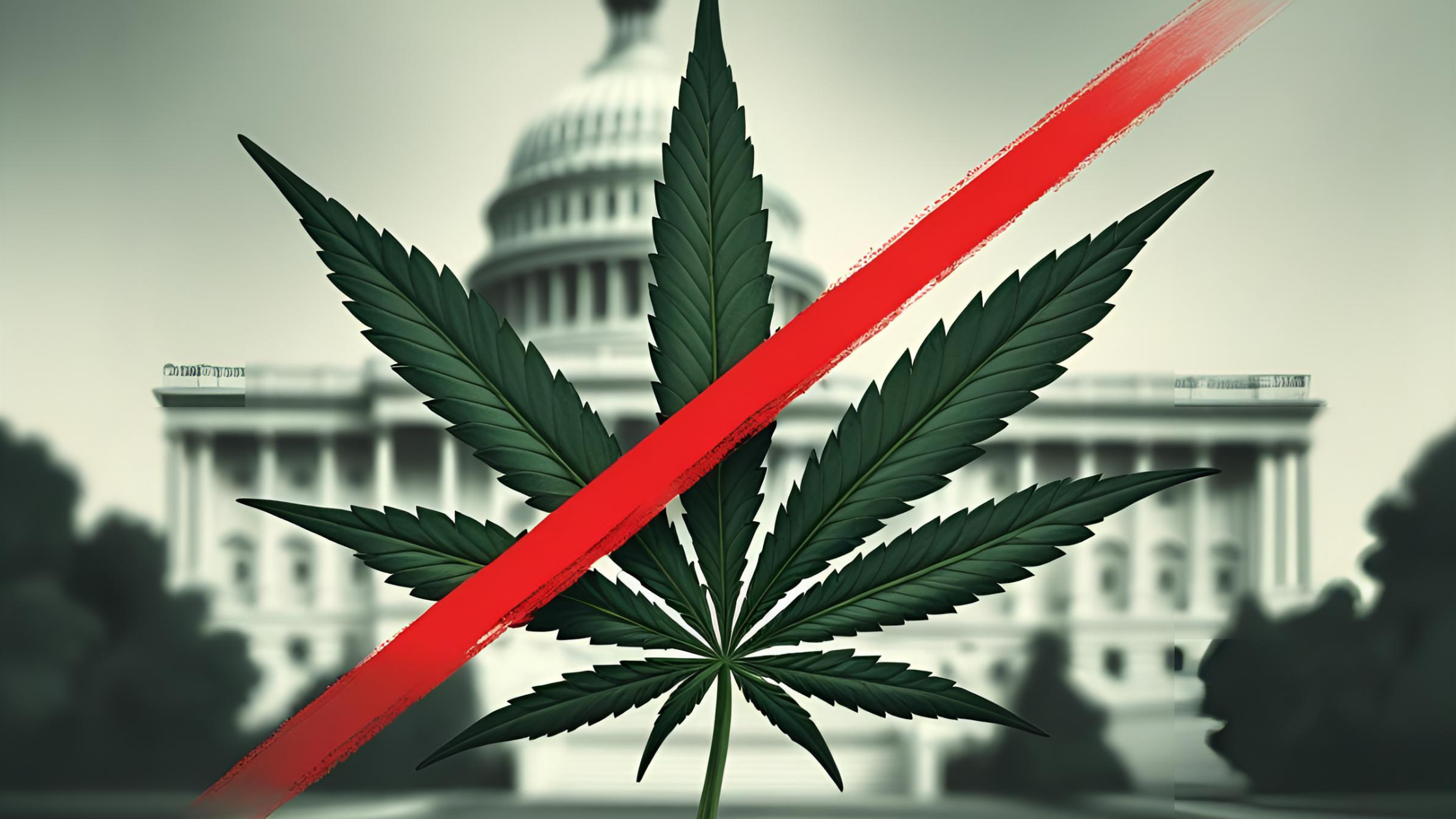
The 2026 Farm Bill: What Hemp Advocates Need to Know
The 2026 Farm Bill is shaping up to be one of the most consequential pieces of agricultural legislation in decades—particularly for the hemp industry. While most Americans associate the Farm Bill with crop subsidies and rural development programs, this comprehensive legislation touches nearly every aspect of American agriculture, including the regulatory framework that governs hemp production and distribution.
For hemp advocates, understanding the 2026 Farm Bill isn't just important—it's essential. The decisions made during this legislative process will determine whether the hemp industry continues to thrive or faces new regulatory challenges that could fundamentally alter its trajectory. This guide breaks down everything you need to know about the 2026 Farm Bill, its potential impact on hemp, and how advocates can effectively engage in the process.
Understanding the Farm Bill Framework
The Farm Bill is renewed every five years and serves as the primary agricultural and food policy tool of the federal government. The current version, passed in 2018, expires in 2023, making 2026 the year for comprehensive reauthorization. This legislation typically includes provisions for commodity programs, crop insurance, conservation, nutrition assistance, rural development, research, forestry, energy, and specialty crops.
Hemp's inclusion in the 2018 Farm Bill marked a historic moment for the industry. The legislation removed hemp from the Controlled Substances Act, provided a clear regulatory pathway for cultivation, and established hemp as a legitimate agricultural commodity. However, the regulatory landscape has evolved significantly since then, and the 2026 Farm Bill presents both opportunities and challenges for continued hemp development.
Key Components of Farm Bill Structure
The Farm Bill is organized into several titles, each addressing different aspects of agricultural policy. Hemp-related provisions typically fall under multiple titles, including commodity programs, research, and specialty crops. Understanding this structure helps advocates identify where hemp-related language might appear and how different provisions interact with each other.
The drafting process begins years before the final bill reaches Congress. Agricultural committees in both the House and Senate hold hearings, gather stakeholder input, and develop preliminary proposals. This extended timeline provides multiple opportunities for hemp advocates to influence the final legislation, but it also means that opposing interests have time to organize their own efforts.
Current Hemp Regulatory Environment
Since the 2018 Farm Bill, hemp has operated under a complex regulatory framework involving multiple federal agencies. The USDA oversees cultivation through state-approved programs, while the FDA maintains authority over hemp-derived products intended for human consumption. This division of regulatory responsibility has created both opportunities and challenges for the industry.
State Program Implementation
Most states have developed their own hemp programs under USDA oversight. These programs establish licensing requirements, testing protocols, and compliance procedures for hemp cultivators. The variability between state programs has created a patchwork of regulations that can be challenging for interstate commerce but also allows for innovation and experimentation in regulatory approaches.
Testing and Compliance Standards
Current hemp regulations require testing for THC content to ensure products remain below the 0.3% threshold established in federal law. Testing laboratories must be accredited and follow strict protocols for sample collection, analysis, and reporting. These standards have helped establish consumer confidence in hemp products but have also created compliance costs that can be challenging for smaller operations.
Market Development Challenges
Despite legal cultivation, hemp-derived products face ongoing regulatory uncertainty, particularly regarding FDA oversight of consumable products. This uncertainty has limited investment in some sectors while encouraging innovation in others. The 2026 Farm Bill presents an opportunity to address these regulatory gaps and provide greater clarity for market participants.
Potential Changes and Implications
The 2026 Farm Bill reauthorization process will likely address several key areas affecting hemp. These include refinements to cultivation regulations, clarification of federal agency roles, and potential expansion of hemp-related research and development programs.
Cultivation and Processing Refinements
Early discussions suggest potential changes to hemp cultivation regulations, including modifications to testing requirements, handling of hot hemp crops, and interstate transportation rules. These changes could significantly impact cultivation costs and operational complexity for hemp farmers.
Processing regulations may also face scrutiny, particularly regarding the production of cannabinoid-based products. The relationship between hemp processing and state marijuana regulations remains complex, and the 2026 Farm Bill could provide opportunities to clarify these jurisdictional issues.
Research and Development Opportunities
The 2026 Farm Bill will likely include provisions for agricultural research funding, presenting opportunities for expanded hemp research programs. This could include studies on agronomic practices, genetic development, processing technologies, and market applications.
University research programs have been particularly important for hemp industry development, and continued federal support for these programs could accelerate innovation and help address ongoing challenges in cultivation and processing.
Interstate Commerce and Banking
Hemp businesses continue to face challenges related to interstate commerce and banking services. While hemp is federally legal, regulatory uncertainty has limited access to traditional banking services and complicated interstate transportation. The 2026 Farm Bill could address these issues through clarifying legislation or directing federal agencies to develop supportive policies.
Economic Impact and Industry Considerations
The hemp industry has experienced significant growth since 2018, with cultivation expanding across multiple states and new product categories emerging regularly. This growth has created jobs in rural areas, generated tax revenue, and provided farmers with new crop options.
Agricultural Economic Benefits
Hemp cultivation has provided economic diversification opportunities for farmers, particularly in regions where traditional crops face market challenges. The relatively high value per acre compared to commodity crops has made hemp attractive to smaller farming operations and those seeking to maximize revenue from limited acreage.
Processing and manufacturing sectors have also benefited from hemp legalization, with new businesses emerging to serve growing demand for hemp-derived products. These businesses often locate in rural areas, providing employment opportunities and economic development in communities that have historically relied on traditional agriculture.
Market Development Trends
The hemp market has evolved rapidly since 2018, with new product categories and applications emerging regularly. Industrial applications, including textiles, construction materials, and bioplastics, represent significant long-term growth opportunities. Food and beverage applications continue to develop, though regulatory uncertainty has slowed some market segments.
Consumer acceptance of hemp products has grown significantly, driven by increased awareness of hemp's benefits and improved product quality. This market development has created opportunities for brand development, retail expansion, and value-added processing.
Advocacy Strategies and Stakeholder Engagement
Effective advocacy during the 2026 Farm Bill process requires understanding both the legislative timeline and the key decision-makers involved. Hemp advocates must engage with multiple stakeholders, including congressional staff, agricultural organizations, and industry groups.
Congressional Engagement
The House and Senate Agriculture Committees will play central roles in drafting hemp-related provisions. Committee members and their staff need to understand hemp industry perspectives and priorities. This engagement should begin early in the process and continue throughout the drafting and markup phases.
Regional delegations can also be important allies, particularly representatives from states with significant hemp production. These members understand the local economic impact of hemp policies and can provide valuable support during floor debates and amendment processes.
Industry Coalition Building
Successful advocacy often requires coalition building with other agricultural interests. Hemp advocates should identify common ground with other specialty crop producers, rural development organizations, and agricultural research supporters. These coalitions can amplify hemp industry voices and provide broader support for favorable provisions.
Public Education and Awareness
Many policymakers and staff members still have limited understanding of hemp production and processing. Educational efforts should focus on hemp's agricultural benefits, economic impact, and regulatory compliance record. Case studies from successful hemp operations can be particularly effective in demonstrating the industry's potential.
Challenges and Opportunities Ahead
The 2026 Farm Bill process will present both challenges and opportunities for hemp advocates. Understanding these dynamics can help stakeholders prepare effective advocacy strategies and realistic expectations for potential outcomes.
Regulatory Harmonization
One of the most significant opportunities involves harmonizing hemp regulations across different federal agencies and state programs. The current patchwork of regulations creates compliance challenges and limits industry efficiency. The 2026 Farm Bill could provide mechanisms for improved coordination between agencies and clearer guidance for industry participants.
Market Access and Development
Expanding market access for hemp products remains a priority for many industry stakeholders. This includes addressing banking and financial services challenges, clarifying interstate commerce rules, and providing regulatory certainty for product development. The 2026 Farm Bill could include provisions addressing these issues or directing agencies to develop supportive policies.
Research and Innovation Support
Continued federal support for hemp research will be crucial for industry development. The 2026 Farm Bill could expand funding for university research programs, support the development of new hemp varieties, and promote research into novel applications and processing technologies.
Taking Action: How to Make Your Voice Heard
The 2026 Farm Bill process provides multiple opportunities for hemp advocates to influence policy outcomes. Effective participation requires understanding the legislative timeline, identifying key decision-makers, and developing compelling messages that resonate with policymakers.
Engaging with Representatives
Contacting your representatives is one of the most direct ways to influence Farm Bill provisions. These contacts should be regular, informative, and focused on specific policy recommendations. Personal stories about hemp's impact on your community or business can be particularly effective.
Supporting Advocacy Organizations
Organizations like the American Healthy Alternatives Association (OHAA) work full-time to represent hemp industry interests in Washington. Supporting these organizations through membership, donations, or volunteer activities helps ensure that hemp voices are heard throughout the legislative process.
Staying Informed and Engaged
The Farm Bill process extends over several years, with multiple opportunities for input and engagement. Staying informed about legislative developments, committee activities, and advocacy opportunities helps ensure that hemp supporters can respond effectively to changing circumstances.
Building a Sustainable Future for Hemp
The 2026 Farm Bill represents more than just another legislative milestone—it's an opportunity to build a more sustainable and prosperous future for American hemp. The decisions made during this process will influence industry development for years to come, affecting everything from cultivation practices to market opportunities.
Success requires sustained engagement from all hemp stakeholders, including farmers, processors, manufacturers, retailers, and consumers. By working together and maintaining focus on shared goals, the hemp community can help ensure that the 2026 Farm Bill supports continued industry growth and innovation.
The stakes are high, but so is the potential for positive change. Hemp has proven its value as an agricultural commodity, economic driver, and source of beneficial products. Now it's time to ensure that federal policy reflects these realities and supports the industry's continued development.
The 2026 Farm Bill process is already underway, and hemp advocates have an opportunity to shape its outcome. By understanding the issues, engaging with policymakers, and supporting advocacy efforts, you can help ensure that hemp continues to thrive under federal law.
Take action today by contacting your representatives, supporting advocacy organizations like OHAA, and staying engaged throughout the legislative process. The future of hemp depends on the actions we take now.

